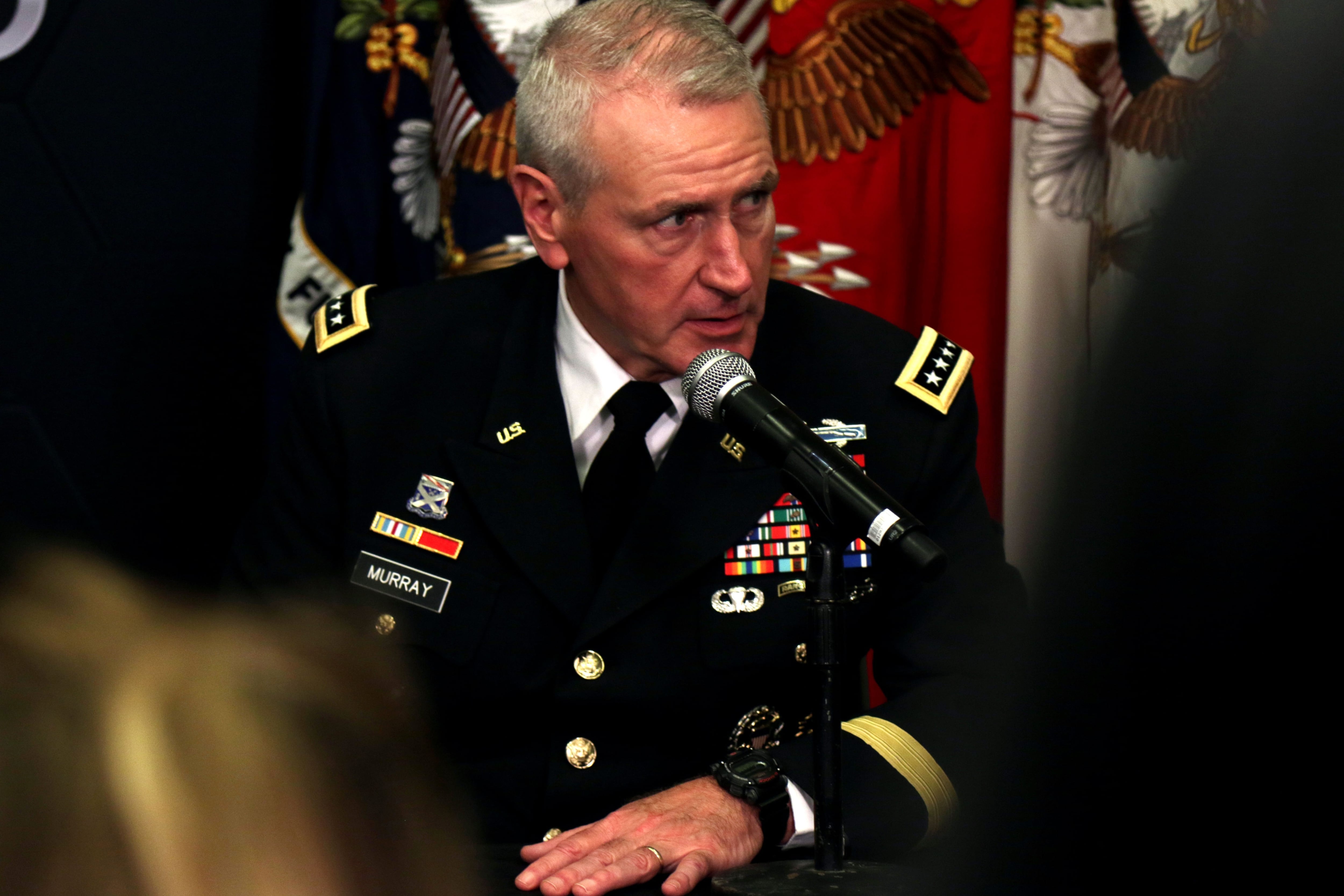In slightly more than a year, the Army’s newest major entity, Army Futures Command, has grown from a staff of a dozen soldiers to taking on a combined force of 26,000 people.
The new command has coordinated the work of the Army’s cross functional teams that run areas from network to future helicopters, long-range fires and navigation.
The command is doing future-focused work beyond linking its existing research labs and centers of excellence. The new Army Applications Lab in Austin, Texas, for example, is looking for “disruptive tech” to solve problems for future combat, Lt. Gen. James Richardson, deputy commander at AFC, told Army Times ahead of the Association of the U.S. Army meeting.
RELATED

Other projects include work with the Army Artificial Intelligence Task Force at Carnegie Mellon University to see how AI will be best used for a variety of tasks and missions.
That also involves working with the Army Reserve’s 75th Innovation Command, an entire unit dedicated solely to driving concepts, capabilities and innovation that improves readiness and lethality through using private sector work to enhance Army activities.
That includes hardware being fielded, such as the Enhanced Night Vision Goggle-Binocular, which went to the 1st Infantry Division in September. The goggle includes day/night optic, thermal vision, augmented reality features and a rapid targeting acquisition software.
The eight CFTs that are being coordinated by AFC have a combined 31 lines of effort with 48 programs. Richardson said that each of those have been sped up by years, and requirements writing, which is a big first step in developing any new tech for the military, has been shrunk down from years to months.
He attributes much of that acceleration to getting soldiers involved in running the gear through its paces early.
“It’s designed, built and tested with soldiers,” he said. “That cuts down on the timeline tremendously.”
Beyond the AI Task Force, the Army has also inked partnerships with University of Texas and Texas A&M. Richardson said that they’re looking at similar relationships with Wichita State University, Baylor University and Rice University.
While the Army and other services have had such arrangements for decades with academic institutions, those primarily focused on theoretical research, white papers and such items. These new partnerships are looking to have the college students and researchers prototyping some of their ideas into tangible products.
Some of the work through the CFTs connects to other services, such as with the Position Navigation and Timing CFT. That group is talking with Air Force officials on linking space-based work to help the Army better understand their own “system of systems” approach to the kill chain of seeing targets, communicating back and destroying targets.
The shooter-focused PNT communications in Low Earth Orbit satellite configurations with the Air Force could result in a memorandum of understanding in the coming weeks, Richardson said.
In the next five years, the organization will likely look very similar, barring some minor tweaks, he said. But what will be different is all of the equipment that’s being developed will be in the hands of soldiers, and that will help the next wave of AFC staff learn from that and learn where to continue adjusting.
While much of the overall work AFC does resides at very high levels of Army decision makers and joint partnerships, its intended effect will reach through the ranks.
“What we’re doing is for that E-1 and second lieutenant,” Richardson said. “It is focused on the future technology, future operating environment and how we fight and organize for that environment.”
Todd South has written about crime, courts, government and the military for multiple publications since 2004 and was named a 2014 Pulitzer finalist for a co-written project on witness intimidation. Todd is a Marine veteran of the Iraq War.




